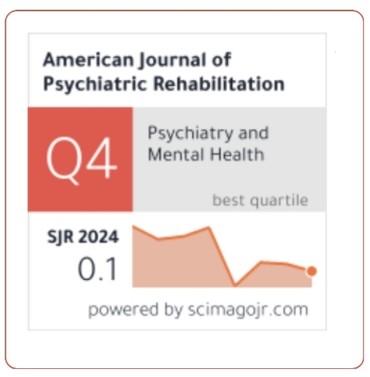Prevalence Of Unintended Pregnancies and Associated Factors Amongst Women Attending the Antenatal Clinics of Primary Health Care Centers In Jeddah, Saudi Arabia: A Cross-Sectional Study
DOI:
https://doi.org/10.69980/ajpr.v28i1.314Keywords:
Unintended pregnancy, Factors, Survey, Contraception, Family planning, Birth controlAbstract
Background: Unintended pregnancy can have a significant negative impact on women's well-being and infant health, often leading to increased anxiety and stress.
Objective: This survey aimed to determine the frequency of unintended pregnancies and identify the connection between socio-demographic factors and pregnancy intentions.
Methods: A cross-sectional study was conducted on 345 pregnant women attending four primary healthcare centers in Jeddah, Saudi Arabia. The survey delved into the participants' pregnancy intentions, their emotional responses upon learning about the pregnancy, and the factors influencing their decision to conceive. Statistical analyses, including the chi-square test, were utilized to assess the relationship between socio-demographic variables and outcomes such as pregnancy intentions and desired family size.
Results: The survey revealed that 49.8% of the pregnancies were unintended, and 59.5% of the women had previously used a family planning method. Notably, 16.0% reported becoming pregnant due to a failure of their chosen family planning method. The study identified that women with only primary school education were more likely to have unintended pregnancies (p=0.04), as were those who were unaware of their ovulation days (p=0.04).
Conclusion: The findings revealed a significant proportion of unplanned pregnancies. Healthcare authorities must develop comprehensive family planning and reproductive health awareness programs to emphasize the importance of birth control.
References
1. Aragaw, F.M., et al., Magnitude of unintended pregnancy and its determinants among childbearing age women in low and middle-income countries: evidence from 61 low and middle income countries. Front Reprod Health, 2023. 5: p. 1113926.
2. Ameyaw, E.K., et al., Prevalence and determinants of unintended pregnancy in sub-Saharan Africa: A multi-country analysis of demographic and health surveys. PLoS One, 2019. 14(8): p. e0220970.
3. Sarder, A., et al., Prevalence of unintended pregnancy and its associated factors: Evidence from six south Asian countries. PLoS One, 2021. 16(2): p. e0245923.
4. Ampt, F.H., et al., Incidence of unintended pregnancy among female sex workers in low-income and middle-income countries: a systematic review and meta-analysis. BMJ Open, 2018. 8(9): p. e021779.
5. Singh, S., G. Sedgh, and R. Hussain, Unintended pregnancy: worldwide levels, trends, and outcomes. Stud Fam Plann, 2010. 41(4): p. 241-50.
6. Bearak, J., et al., Global, regional, and subregional trends in unintended pregnancy and its outcomes from 1990 to 2014: estimates from a Bayesian hierarchical model. Lancet Glob Health, 2018. 6(4): p. e380-e389.
7. Finer, L.B. and M.R. Zolna, Shifts in intended and unintended pregnancies in the United States, 2001-2008. Am J Public Health, 2014. 104 Suppl 1(Suppl 1): p. S43-8.
8. Soliman Aziza Tosson, A.S.B., AlHaziem Sara, Almoutary Hesa, Reproductive health and neonatal consequences of unintended childbearing among Saudi women. Journal of Nursing Education and Practice, 2015. 5.
9. Almaghaslah, E., R. Rochat, and G. Farhat, Validation of a pregnancy planning measure for Arabic-speaking women. PLoS One, 2017. 12(10): p. e0185433.
10. Santelli, J., et al., The measurement and meaning of unintended pregnancy. Perspect Sex Reprod Health, 2003. 35(2): p. 94-101.
11. Kost, K. and L. Lindberg, Pregnancy Intentions, Maternal Behaviors, and Infant Health: Investigating Relationships With New Measures and Propensity Score Analysis. Demography, 2015. 52(1): p. 83-111.
12. Altfeld, S., et al., Wantedness of pregnancy and prenatal health behaviors. Women Health, 1997. 26(4): p. 29-43.
13. Gazmararian, J.A., et al., The relationship between pregnancy intendedness and physical violence in mothers of newborns. The PRAMS Working Group. Obstet Gynecol, 1995. 85(6): p. 1031-8.
14. D'Angelo, D.V., et al., Differences Between Mistimed and Unwanted Pregnancies Among Women Who Have Live Births. 2004. 36(5): p. 192-197.
15. Alasoom, L.I. and M.R. Koura, Predictors of postpartum depression in the eastern province capital of saudi arabia. J Family Med Prim Care, 2014. 3(2): p. 146-50.
16. Daulaire, N., et al. Promises to keep. The toll of unintended pregnancies on womens lives in the developing world. 2002.
17. Yokoe, R., et al., Unsafe abortion and abortion-related death among 1.8 million women in India. BMJ Glob Health, 2019. 4(3): p. e001491.
18. Hessini, L., Abortion and Islam: policies and practice in the Middle East and North Africa. Reprod Health Matters, 2007. 15(29): p. 75-84.
19. Alsibiani, S.A., Use of misoprostol for self-induced medical abortions among Saudi women: a call for attention. Gynecol Obstet Invest, 2014. 78(2): p. 88-93.
20. Noor, F.R., et al., Unintended pregnancy among rural women in Bangladesh. Int Q Community Health Educ, 2011. 32(2): p. 101-13.
21. Sumera Aziz Ali, S.S.T., Waris Qidwai Prevalence and Determinants of Unintended Pregnancy : Systematic Review. World Family Medicine Journal/Middle East Journal of Family Medicine 2016. 14: p. 37-46.
22. Nelson, H.D., et al., Associations of Unintended Pregnancy With Maternal and Infant Health Outcomes: A Systematic Review and Meta-analysis. JAMA, 2022. 328(17): p. 1714-1729.
23. Yusof M, S.A., Omar M, Unplanned Pregnancy and Its Associated Factors. Global Journal of Health Science, 2018. 10.
24. Sriprasert, I., et al., Unintended pregnancy and associated risk factors among young pregnant women. 2015. 128(3): p. 228-231.
25. Nyarko, S.H., Unintended Pregnancy among Pregnant Women in Ghana: Prevalence and Predictors. 2019. 2019(1): p. 2920491.
26. Ahinkorah, B.O., et al., Effect of sexual violence on planned, mistimed and unwanted pregnancies among women of reproductive age in sub-Saharan Africa: A multi-country analysis of Demographic and Health Surveys. SSM - Population Health, 2020. 11: p. 100601.
27. Alene, M., et al., Prevalence and determinants of unintended pregnancy in Ethiopia: A systematic review and meta-analysis of observational studies. PLoS One, 2020. 15(4): p. e0231012.
28. Theme-Filha, M.M., et al., Factors associated with unintended pregnancy in Brazil: cross-sectional results from the Birth in Brazil National Survey, 2011/2012. Reproductive Health, 2016. 13(3): p. 118.
29. Goto, A., et al., Factors associated with unintended pregnancy in Yamagata, Japan. Social Science & Medicine, 2002. 54(7): p. 1065-1079.
30. Lamina, M.A., Prevalence and Determinants of Unintended Pregnancy Among Women in South-Western Nigeria. Ghana Med J, 2015. 49(3): p. 187-94.
31. Yazdkhasti, M., et al., Unintended Pregnancy and Its Adverse Social and Economic Consequences on Health System: A Narrative Review Article. Iran J Public Health, 2015. 44(1): p. 12-21.
32. Nigatu Regassa Geda, T.K.L., Unintended pregnancy among married women in Damot Gale District, Southern Ethiopia: Examining the prevalence and risk factors. African Population Studies, 2012. 26.
33. Dutta, M., C. Shekhar, and L. Prashad, Level, Trend and Correlates of Mistimed and Unwanted Pregnancies among Currently Pregnant Ever Married Women in India. PLOS ONE, 2015. 10(12): p. e0144400.
34. Al-Amoudi, S.M., Health empowerment and health rights in Saudi Arabia. Saudi Med J, 2017. 38(8): p. 785-787.
35. Erfani, A., Levels, trends, and determinants of unintended pregnancy in iran: the role of contraceptive failures. Stud Fam Plann, 2013. 44(3): p. 299-317.
36. Jones, R.K. and M.L. Kavanaugh, Changes in abortion rates between 2000 and 2008 and lifetime incidence of abortion. Obstet Gynecol, 2011. 117(6): p. 1358-1366.
Downloads
Published
Issue
Section
License
Copyright (c) 2025 American Journal of Psychiatric Rehabilitation

This work is licensed under a Creative Commons Attribution 4.0 International License.
This is an Open Access article distributed under the terms of the Creative Commons Attribution 4.0 International License permitting all use, distribution, and reproduction in any medium, provided the work is properly cited.









